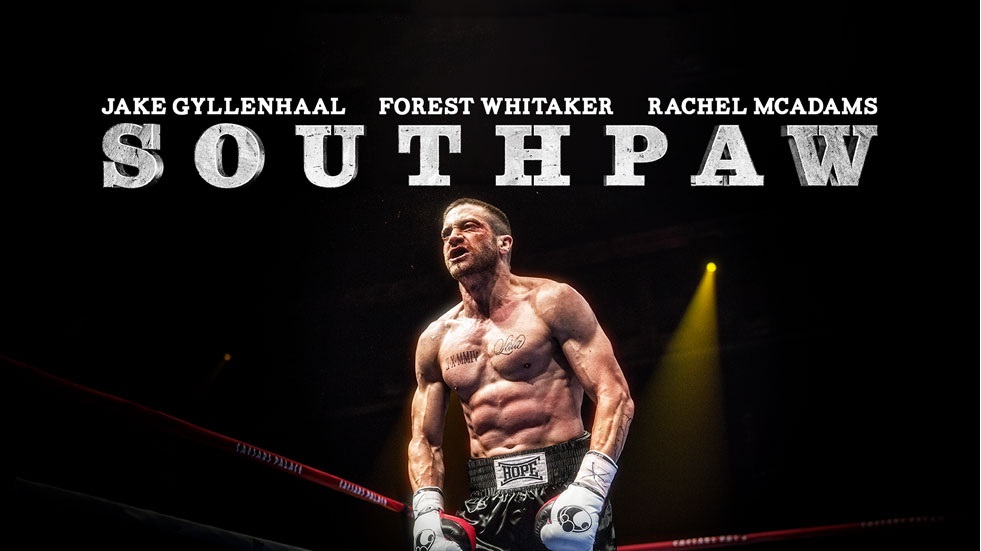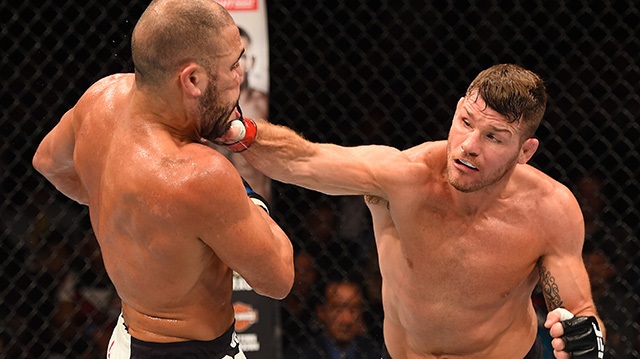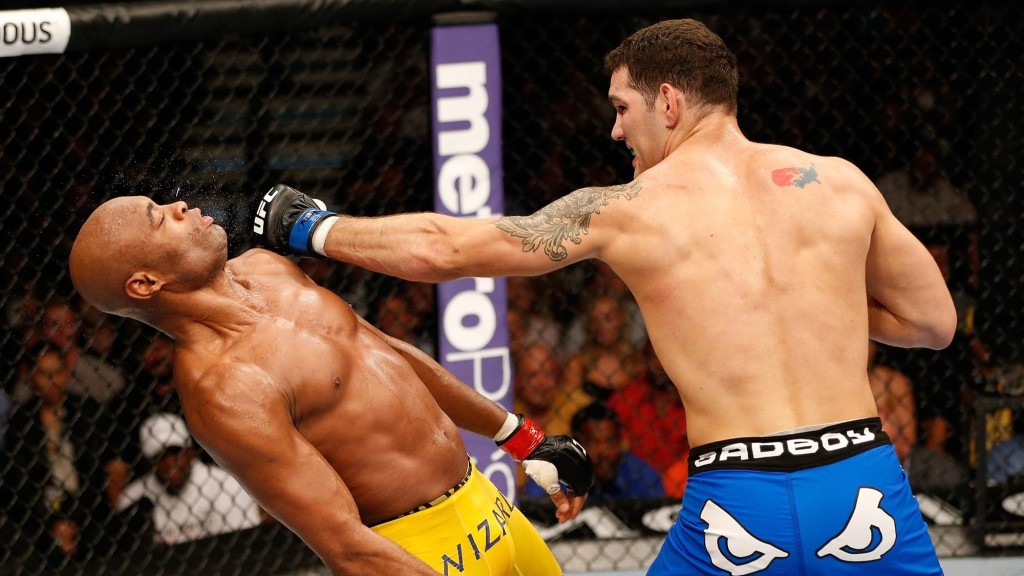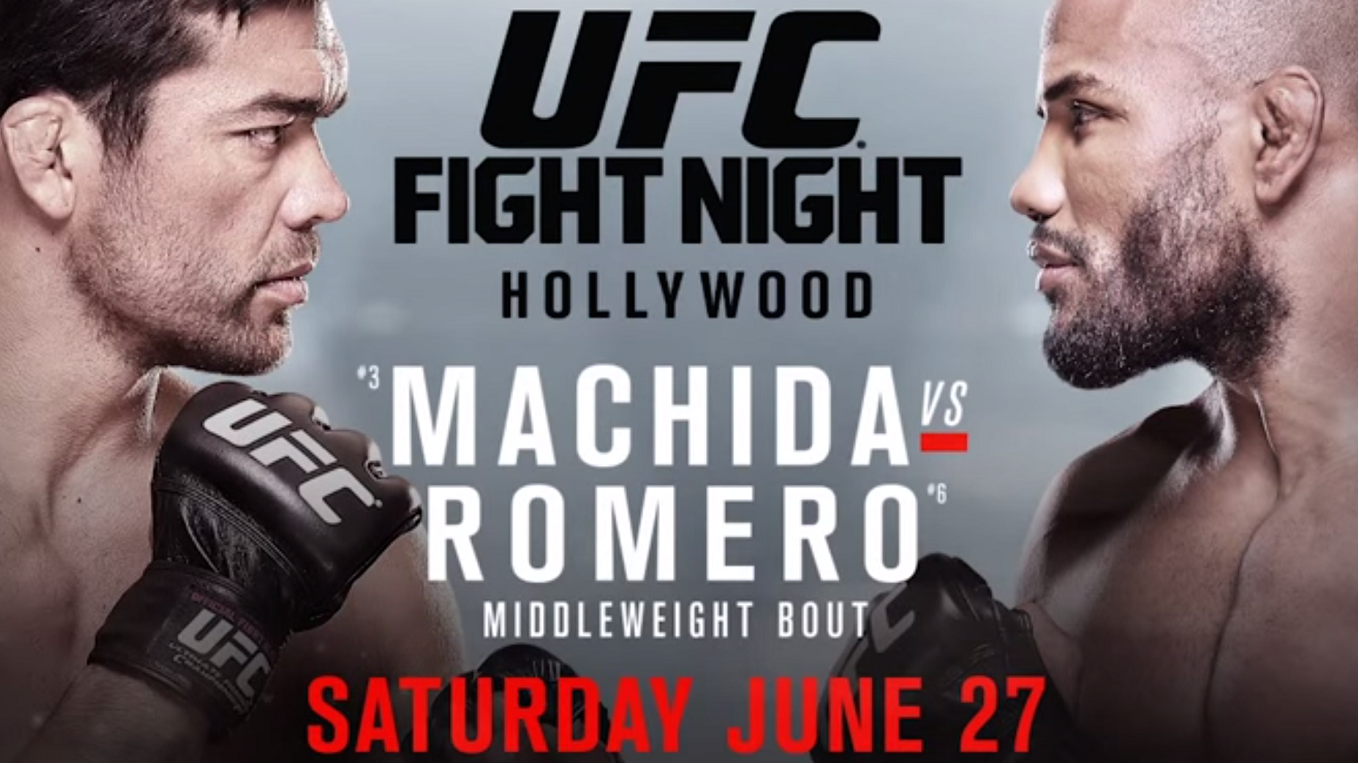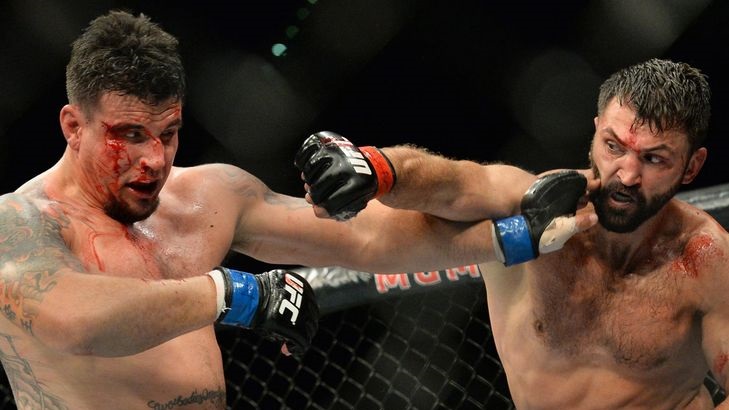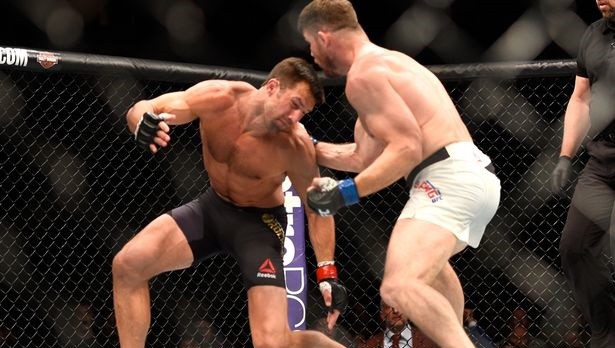
Wow. Just wow. I can’t even right now (if you want to skip straight to analysis, scroll down to the bold).
Michael “The Count” Bisping pulled off an upset that no one thought was possible, knocking out Luke Rockhold in under four minutes. In my wildest dreams, I didn’t think Bisping stood a chance against Rockhold.
I pointed out that Weidman was on the verge of becoming the greatest middleweight in history. Two finishes over Anderson Silva, tactically outmaneuvering Lyoto Machida and surviving a Vitor Belfort rush is nothing to scoff at. I don’t see Jacare submitting Weidman and Yoel Romero doesn’t have the cardio to hang with a true behemoth. I figured Rockhold was his last threat, blaring it at uneducated commenters on social media that despite his knockout loss to a TRT-infused Vitor he was arguably the most complete fighter behind Weidman.
After Rockhold cracked the champ, I thought that was a wrap. If he could beat Weidman in a rematch then no one in the division would challenge him. He was too long, too strong, too proficient on the feet and ground.
Then Bisping slept him harder than Vitor ever did.

No fighter has had their career more altered by TRT usage by their opponents and questionable judging than Michael Bisping. We assumed he would end his career as a Kenny Florian figure, only more tragic due to never actually participating in a title fight and his lack of universal likability. Getting his first chance 37 years old with two weeks of preparation against a monster of a champion seemed . . . cruel.
I despise the cocky Brit, but my goodness I teared up when the belt was around his waist.
Okay that’s enough fangirling.
Bisping looked better the second time around, but I still wasn’t liking his chances.
He had the advantage in boxing and quickness and tried to establish both early. He was smart about darting in, coming in behind accurate punches to lower the chances of a Rockhold counter (mostly his vaunted check hook). I could count the number of punches Bisping took on one hand in that round, an impressive feat for a man who is one of the more hittable in the top 10 middleweights. Several times he’d catch the champion with a punch or two, sometimes punctuated with a leg kick and scurry back before return fire.
But even if the round looks relatively “even” from a judging standpoint, any experienced viewer will tell you that Bisping looked on the back foot.
He was able to shake off the straights and left hooks with relative ease, in contrast to Bisping who visibly felt every kick Rockhold threw.

He only retreated when Bisping threw, but other than that he was advancing at will. Even when Bisping landed, Rockhold managed to slip out of range of the final punch on many occasions.
Then the only true flaw Rockhold had flashed for an instant, and Bisping capitalized with one of the best punches I’ve ever seen.
Rockhold tends to lunge and retreat on a line, meaning he moves straight forward and back. There are many advantages to this style of course, the chief two being that it’s much easier to gauge distance and is literally the quickest way to get out of harm’s way. But also makes your retreat and advances very predictable. Ironically, Rockhold used this predictability against Machida to slap him as he darted in with a check hook to set up the fight ending damage.
But Rockhold had never been truly punished for this predictable movement. Consequently (and similar to Fabricio Werdum) he developed a bad habit. He leans back at the waist when he retreats, but doesn’t raise his shoulder or tuck his chin. Combined with his height and stride length, this lean makes the distance between his chin and opponent too great to overcome . . . most of the time.
A lot of people are saying that Rockhold overcommitted with his jab in the fight ending sequence, but I disagree. Dipping and stepping jabs have been used in the octagon plenty of times before with spectacular results, but they were always used by superior boxers.
Junior Dos Santos has a dramatic level change and step in on his body jabs, but that’s only his body jab.

The body is a relatively immobile target which can’t “slip” a blow like the head. So if Junior misses, that means the opponent is beyond his stepping jab and can’t return fire. If it hits or is blocked, he has essentially placed an “obstacle” in the opponent’s path and the danger of a counter is mitigated.
Alexander Gustafsson has arguably the best dipping jab in the sport, but he never over commits on it. Watch his fight against Jon Jones as Gus simply flicks his jab while maintaining perfect balance, sometimes only extending at the elbow after pulling the champion’s hand down. Look at this beauty of a combination.

Rockhold stepped in, dipped his head and throw a lead hand at Bisping’s face.
While I can’t read minds, I can understand the reasoning. Rockhold most likely wanted to maximize his reach advantage and add extra power to his jab, knowing that Bisping was rushing forward to cut the distance. Conversely, that is trying to hit a moving target with a moving fist while your very base of balance is moving.
Bisping took a half-step forward with his left foot and changed the contact point of Rockhold’s jab just enough to where it glanced harmlessly of his chin. Rockhold was now low, with his guard down and underneath Bisping.

He did what his instinct told him to do, which was gallop away as fast as he could with his antelope stride in a straight line.
But his instincts didn’t account for the decreased distance. Bisping had stepped past the jab, and all of a sudden Rockhold wasn’t as safe as he thought he was. He saw the right hand aimed at his gut and flicked away Bisping’s bicep with his lead hand, but was blind to the overhand left flying over his shoulder.

Two things to note there.
One is another example of deficiencies in Rockhold’s boxing.
If I had to name the best exaggerated, lunging jab happy fighter I’d go with Nate Diaz. The way he throws his vaunted 1-2, bent over at the waist and almost “slinging” his hands forward is ugly by any textbook definition. But he gets away with it because he’s a master of keeping his head moving as he leans back, allowing him to reap the benefits of a lunging punch with none of the drawbacks. Maybe he’ll mix in a duck, maybe a slip, tuck his chin, maybe just hide behind his shoulder but it’s generally difficult to hit him clean.
Rockhold did the exact same thing that Alistair Overeem did during his UFC slide when he leaned and ducked . . . nothing. His chin was had no obstacles in front of it and was pretty stationary. The saddest thing is he probably would’ve gotten away with it if not for Michael Bisping’s shift.
Which brings me to number two: that gorgeous shifting.

It moved Bisping forward which negated the expected loss in momentum of his punch from Rockhold’s retreat. It cut the distance between them so that Bisping’s overhand left (which had been whiffing most of the night) would have the best chance of connecting. Most importantly, it let Bisping get some extra rotation on his trunk which turned a pitter-patter left hand into a ramrod of a cross.
Oh and that second left hook was just so un-Bisping that I could hardly believe it. Rather than attacking with combinations he literally lifted Rockhold with his power hand to feed him the same left that had hurt him earlier.
Perhaps Bisping does have a new wrinkle in his game. His arcing left hook hurt Anderson Silva as the latter swayed but was unable to go low enough, and it was enough to send a notoriously durable Rockhold to the canvas. Maybe that nifty stance shift will become a mainstay in his repertoire? Or maybe he saw his only opportunity to get a world title and pulled out every trick he had, and this was a one time thing.
Either way, in a sport that’s increasingly becoming about PPV numbers over actual fighter skill, it’s nice to see a guy who deserves a shot get a shot.
And then shock the world.






